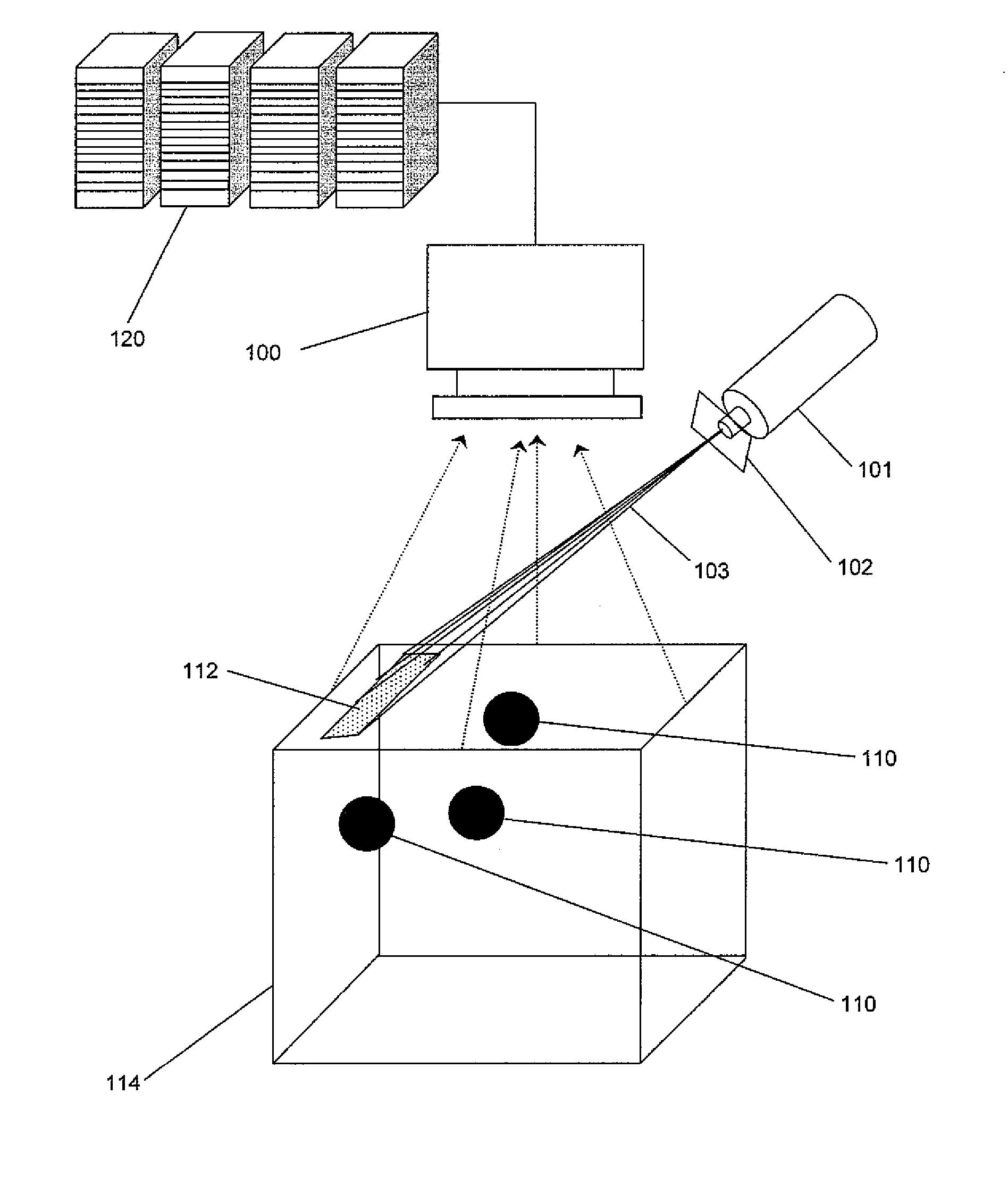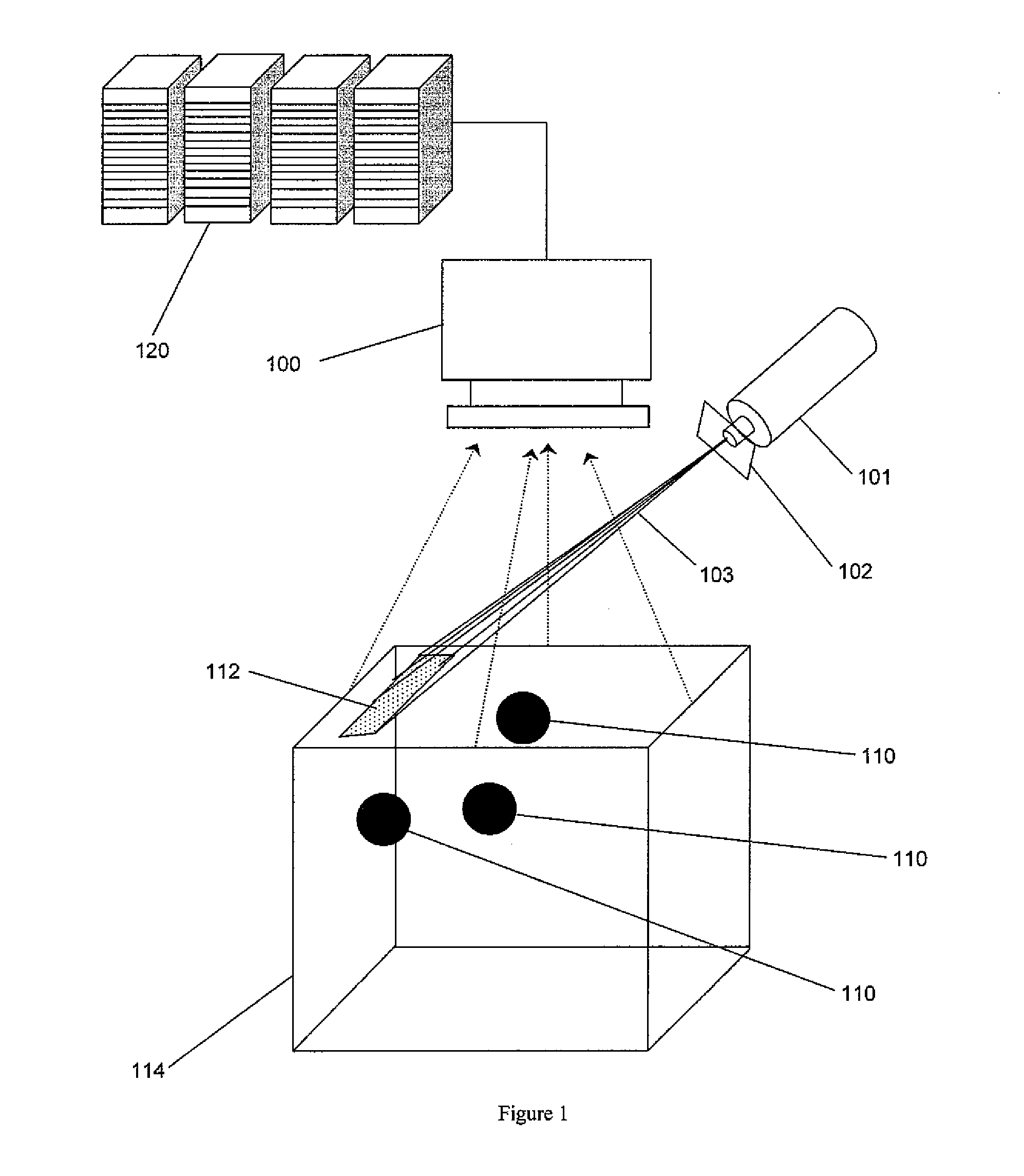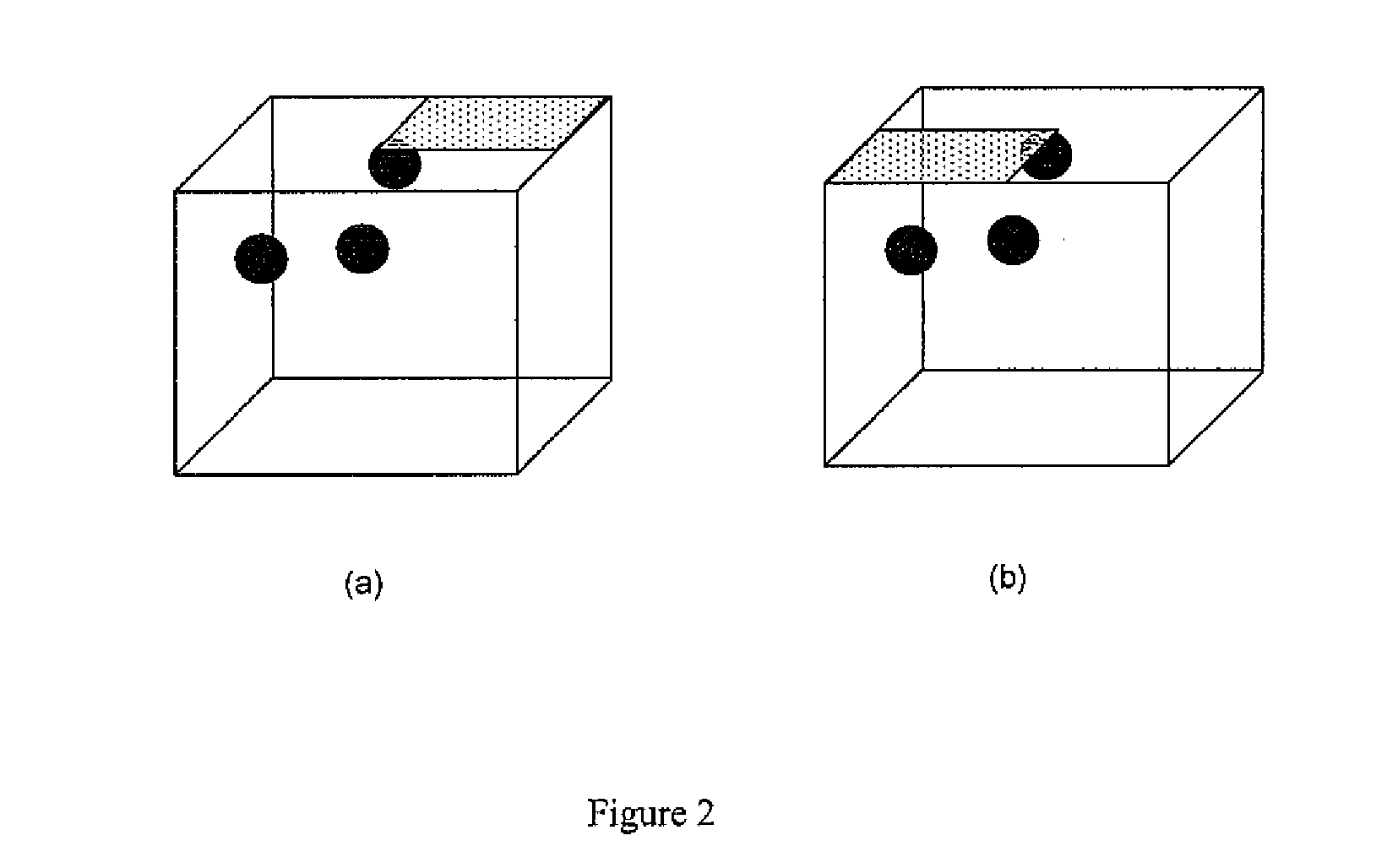Method and System for Non-Contact Fluorescence Optical Tomography with Patterned Illumination
a fluorescence optical tomography and patterned illumination technology, applied in the field of molecular imaging, can solve the problems of inability to accurately resolve inability to accurately solve image reconstruction problems, and inability to provide patterned illumination, etc., to achieve the effect of significantly increasing the cost and improving the accuracy of determining fluorescent targets at varying depths
- Summary
- Abstract
- Description
- Claims
- Application Information
AI Technical Summary
Benefits of technology
Problems solved by technology
Method used
Image
Examples
example 1
[0086] Synthetic measurements were generated on a 512 ml cubical tissue phantom with optical properties of 1% Liposyn. In a right handed coordinate system with the origin at the vertex of the phantom, z=8 plane was set as the illumination and detection plane. Excitation light modulated at 100 MHz was delivered on the illumination plane via a multiple illumination scheme employing (i) four line sources, (ii) four Gaussian sources, and (iii) a combination of diffractive optics patterns. These source patterns are depicted in FIG. 5. The simulated fluorescence amplitude and phase was collected over the illumination plane. On a workstation cluster, the maximum number of sources which can be simulated is only limited by the number of compute nodes. The fluorescent targets were simulated to be 5 mm diameter spheres filled with 1 μM Indocyanine Green solution in 1% liposyn. The phantom background was assumed to be devoid of fluorophores.
[0087] A. Single Target Reconstruction
[0088] The sim...
example 2
[0092] Yorkshire swine were chosen as imaging subjects because the swine dermis and lymphatic network is considered to be similar to human. The animal was anesthetized, intubated, and maintained with isoflurane to prevent movement. A two month old 60 lb female swine was injected with 100 μL of Hyaluronan-I IRDye783 conjugate near the mammary chains. The fluorescence activity of the injected agent was equivalent to 32 μM indocyanine green solution. The dye injection was performed while imaging with a dynamic fluorescence imaging system which showed drainage of the injected contrast agent into the lymph nodes in swine groin. Hyaluronan binds with LYVE-1 receptor which is expressed only in lymphatic channels. After the excess agent was flushed away by the lymphatic pulsing, the vessels and the nodes were observed to be stained with the fluorescence agents and an almost steady state fluorescence signal was observed. Datasets for tomographic imaging were acquired 4 hours aft...
PUM
 Login to View More
Login to View More Abstract
Description
Claims
Application Information
 Login to View More
Login to View More - R&D
- Intellectual Property
- Life Sciences
- Materials
- Tech Scout
- Unparalleled Data Quality
- Higher Quality Content
- 60% Fewer Hallucinations
Browse by: Latest US Patents, China's latest patents, Technical Efficacy Thesaurus, Application Domain, Technology Topic, Popular Technical Reports.
© 2025 PatSnap. All rights reserved.Legal|Privacy policy|Modern Slavery Act Transparency Statement|Sitemap|About US| Contact US: help@patsnap.com



